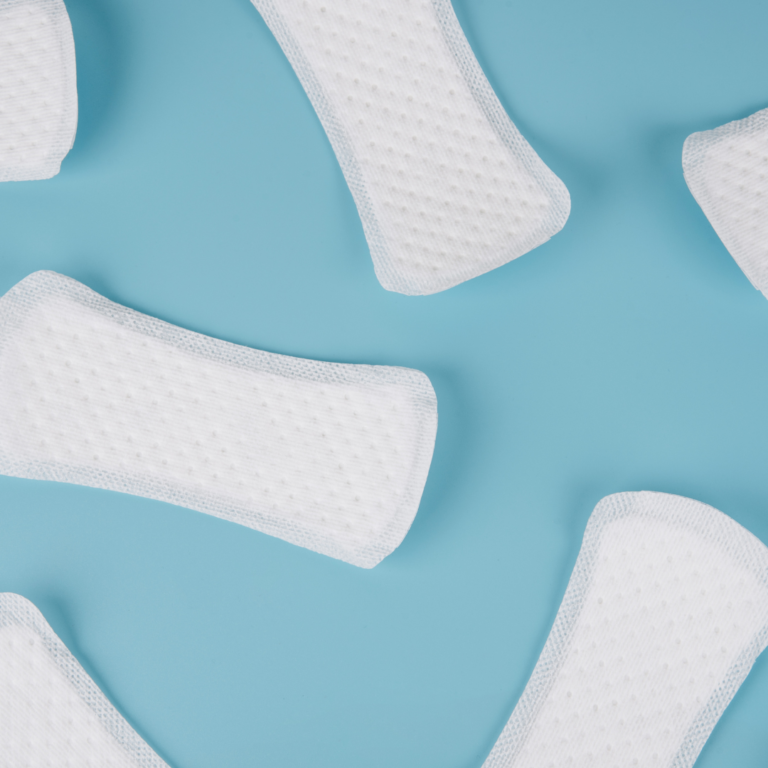The DIY Postpartum Padsicles have been around for a long time. But there are several variations, and which is the best? Below I will teach you how to make DIY Postpartum Padsicles according to a postpartum nurse.
Postpartum Padsicles are important. They are one of the first lines of defense against swelling and discomfort after childbirth. But there are a few rules we need to be aware of when using them. Here’s the right way how to make DIY Postpartum Padsicles.
Why do we need postpartum padsicles?
During vaginal birth, the entire perineum is stretched to make room for your baby. At times, this will create natural tears or the need for an episiotomy. About ninety percent of first-time mothers experience some form of mild tearing with vaginal deliveries. The good news is our bodies were made for the healing process. But we can absolutely help this process along by using the right blend of natural ingredients.
The aftereffects of perineal tearing or an episiotomy can be swelling, discomfort, and pain in the perineum or around the postpartum stitches. Ice or a cold compress is one of the best ways to decrease vaginal pain. In enters the postpartum padsicle.
Though there are a few variations, these are first aid basics for the entire perineal area after childbirth. There are many ways to help your body heal after a vaginal delivery. DIY postpartum padsicles are a great way to start. I’m including some other simple healing techniques below.
How far in advance should you make Padsicles?

First, a few guidelines. Ice should only be applied for 10-20 minutes at a time according to ACOG (the American College of Obstetricians and Gynecologists). And it really is most effective during the first 24-72 hours. After that, if it’s comforting, continue with it, but know there isn’t a lot of benefits to continuing with ice or a frozen maternity pad beyond that.
DIY Postpartum Padsicles can be used immediately after birth. If you are in a hospital or birthing center, there is no need to bring these with you. If you have excess pain or swelling, your nurse will apply an ice pack right away.
DIY padsicles are a quick way to make your own padsicles for when you discharge back home. I recommend making several at a time and placing them in a freezer bag so they are easy to grab and also stay free from contamination in your freezer. Personally, the freezer was a bit cold for me, and I preferred the refrigerator. Do which one feels best. These can be made a month ahead of delivery if you like. You could also put someone else in charge of preparing these for you.
How do you make the best Padsicles?
The type of pads or type of underwear you use is up to you. The most important thing to consider when choosing is comfortable, full-coverage underwear and an absorbent pad. For this reason, heavy absorbent pads with wing tabs usually work well for perineal ice packs. Here’s one of my favorite organic varieties.
Disposable mesh underwear can be super convenient the first several days after delivery. Ask your nurse and they may send a couple pairs home with you! Other moms prefer a discreet postpartum diaper so they don’t have to deal with pads plus underwear.
How to make DIY postpartum padsicles
For postpartum recovery, you want to use padsicles that are comforting, help with postpartum pain, and also have healing properties. Add these ingredients to your grocery list as postpartum essentials!
DIY Postpartum Padsicles Ingredients
- A heavy, sanitary pad
- Witch Hazel pads (non-alcohol are best)
- One-gallon freezer bag
DIY Postpartum Padsicle Pre-Rinse
- Peri Bottle (you should receive one of these in the hospital)
- 2 drops of Lavender Essential Oil
- 1/2 tbsp pure Aloe Vera gel (or fresh aloe vera if you have it)
Wash your hands. Take your pad (sanitary napkin) and open it up. Add 3 witch hazel pads. Some postpartum moms place witch hazel pads over the entire length of the pad. If this helps go for it. Most of the time, we are only sore around the perineum (the vagina, the anus, and the skin between the two). Fold the pad back up and carefully place it in a freezer bag. Put in the freezer or refrigerator until ready to use.
New Mom Pro Tip: Create a lavender rinse for when you are finished using the restroom. Fill your peri bottles with warm water. Add two drops of lavender essential oil and 1/2 tablespoon aloe vera. Swirl around. Spray from vagina to anus. Lightly pat to dry if desired, and put on your DIY postpartum padsicle.
How to make DIY postpartum padsicles
Here’s why I chose these particular ingredients for healing and pain relief. Lavender is antibacterial and antifungal. Its aromatherapy properties also promote calm. It’s very important that you don’t use too much essential oil directly on your skin. Always dilute it. This is why I include drops of lavender oil as the healing rinse and not directly on the pad.

Alcohol-free witch hazel has anti-inflammatory properties. (Alcohol can dry out your skin if used repeatedly.) Aloe is a soothing skin remedy that also contains healing benefits. I prefer fresh aloe, but not everyone has access to this. Use a pure aloe vera gel as a good alternative. Not only do these provide soothing relief, but they also promote healing to all your lady parts. And bonus, these provide hemorrhoid relief as well. Perfect for postpartum care!
How do the 10% of new mothers not tear? Here are 7 ways to help prevent perineal tears. These are also tried and true ways to heal if you have already experienced a tear.
Other Ways to Heal Tears and Episiotomies
DIY Postpartum Padsicles are a great start to the healing process of postpartum life. Here are a few other simple things you can do to promote comfort and healing during this time.
A Sitz Bath
Using a sitz bath twice a day can help promote comfort and healing if you have vaginal pain. Though tub baths aren’t recommended for the first two weeks after delivery, a sitz bath is safe. Add a couple of drops of lavender essential oil if you would like, or make a sitz bath “herbal tea” for extra soothing. Ask for one in the hospital. You can also take it home.
Do Your Kegels
Kegels, contracting your pelvic floor muscles, promote blood flow to the perineal area. Increased blood flow helps with faster healing. If you aren’t familiar with Kegels, imagine picking up a blueberry with your vagina. Don’t forget to put the blueberry back down. Both are important. Performing at least ten of these five days a week can help!
Sit on a Boppy
Though I never could get the hang of a Boppy with nursing, it was great to sit on. Sitting on a Boppy, hemorrhoid pillow, or sitting on your side can relieve pressure and discomfort. The best part of this is its instant relief!
Post may contain affiliate links

